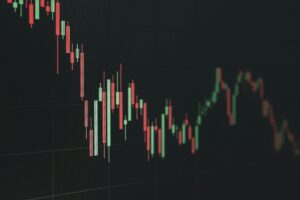Morningstar’s Manager Research team has produced and published its Fixed-Term Bond Funds in Europe and Asia report. It looks into the advantages and pitfalls of these increasingly popular products.
The Morningstar research reflects that in 2023, fixed-term bond funds have seen incredible inflows, outpaced only by money market funds. This shift signals a change in investor behaviour, looking for safety in higher interest rates and perceived lower-risk products.
Fixed-term bond funds’ popularity exploded in 2023; among funds and exchange-traded funds domiciled in Europe, the fixed-term bond Morningstar Category saw more inflows than any other category group except money market funds.
The current demand for fixed-term bond funds seems to be driven by investors’ desire for relatively low-risk products and higher interest rates, especially as many European banks have been slow to increase interest rates on term deposits in response to the European Central Bank’s rate hikes.
Morningstar’s fixed-term bond category saw a record 284 unique fund launches in 2023, bringing the current total to more than 900 strategies. It also experienced more than EUR 60 billion in net inflows over 2023, more than twice the level of inflows experienced in any previous calendar year.
According to Morningstar, this has brought the total assets under management in the category to EUR 156 billion as of January 2024, surpassing fixed-income heavyweight categories like EUR diversified bond (EUR 116 billion) and EUR government bond (EUR 97 billion).
Their research found that 93% of euro-denominated fixed-term bond funds outperformed the EUR diversified bond and EUR corporate bond Morningstar Category averages over their lifetimes, while a slimmer majority of US-dollar-denominated fixed-term bond funds outperformed their USD diversified bond and USD corporate bond peers.
More recently, cheap, diversified, and transparent fixed-term exchange-traded funds have become available from a handful of passive fund providers. While still in their infancy, these products provide investors with a more predictable way to access the fixed-term bond market at a fraction of the cost.

Often, fixed-term bond funds are marketed to investors as being similar in nature to fixed deposits, a misleading comparison that downplays their level of credit risk. In fact, these funds’ exposures to high-yield and emerging-markets bonds are significantly higher than conventional open-end funds in Morningstar’s corporate and diversified bond-fund categories, leaving some funds vulnerable to default risk (and the risk that investors could withdraw funds early).
Shannon Kirwin, associate director, manager research, Morningstar, commented: “In the current market, fixed-term bond funds seem to be hitting the sweet spot for investors who are eager to take advantage of higher interest rates but reluctant to take on the market risk associated with owning a traditional bond fund. While these products have mostly delivered on their promises to investors, it’s important not to overlook their risks. Some of these funds carry substantial exposures to risky asset classes like high-yield corporate debt and emerging-markets bonds, and defaults can—and occasionally do—occur in this category. Investors mistaking fixed-term bond funds for fixed-term bank deposits do so at their peril. That being said, a fixed-term bond fund that is managed in a diversified and risk-aware fashion, and sold at a reasonable price, can have a place in a balanced portfolio.”














